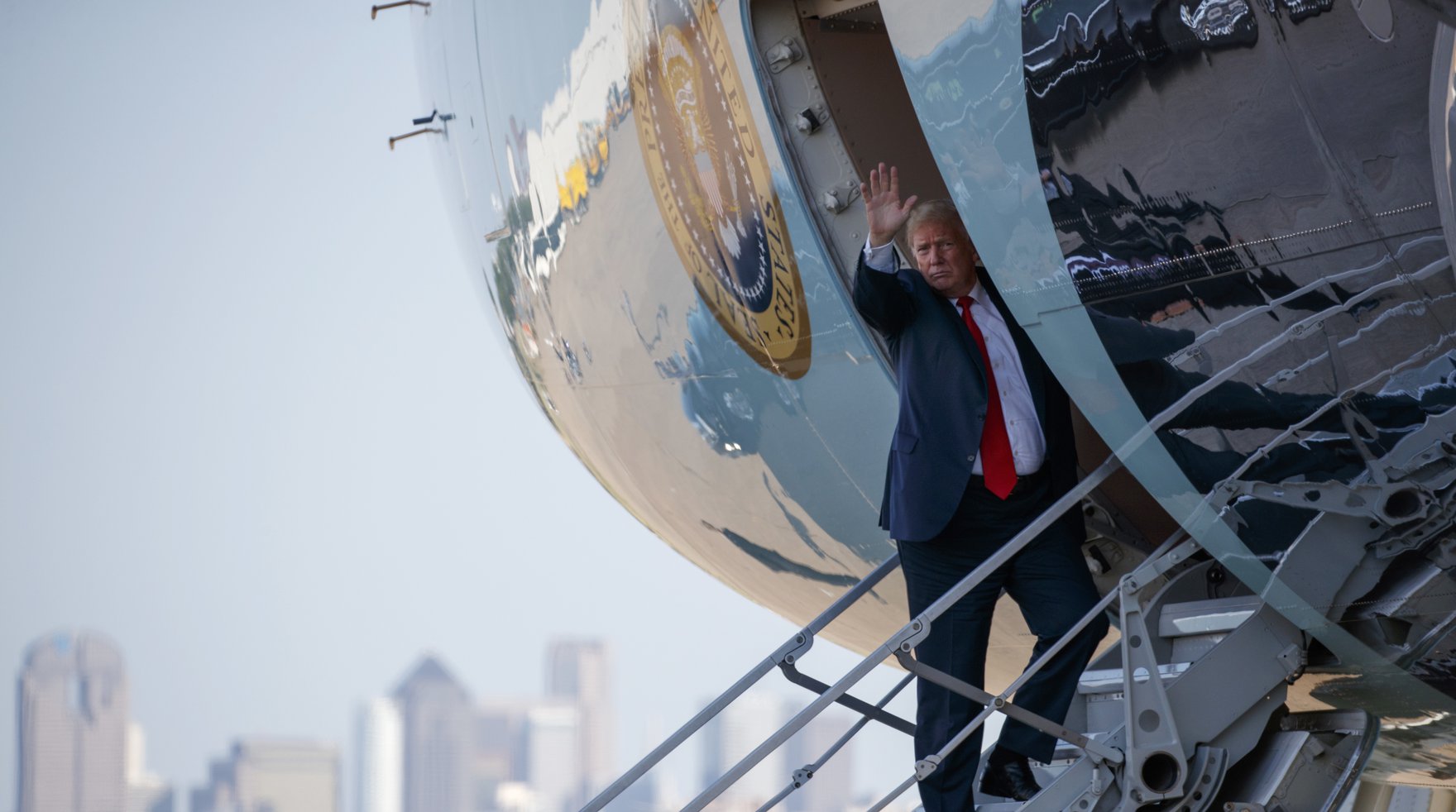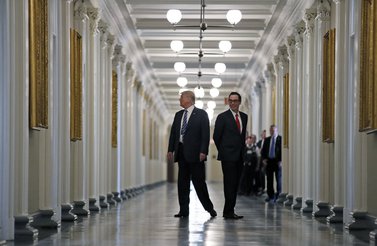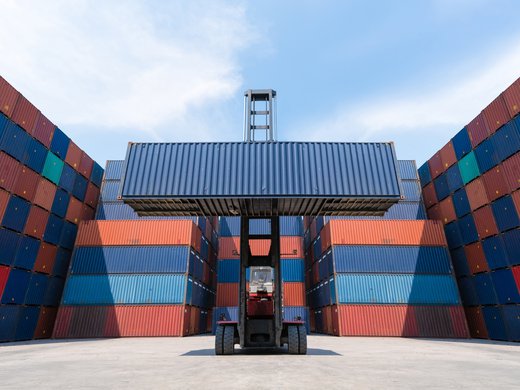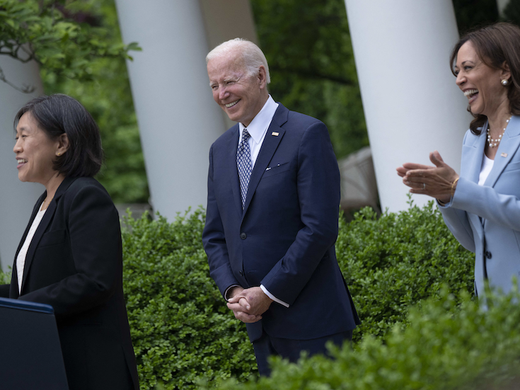In retrospect, the past seven decades may well be remembered fondly as a period of remarkable global progress. Former adversaries were welcomed into the community of nations, united by a set of shared ideals, including free markets, equal access to global resources and democratic government. The global economy thrived under the aegis of a global architecture of international institutions and economic agreements. The benefits of this rules-based order are clear: global poverty was reduced, and countries that adhered to the commitments and obligations on which it was based prospered.
All of that is at risk.
The international system that has provided prosperity and peace for millions took seven decades to construct. Today, US President Donald Trump is not only intent on tearing down that system, he is succeeding.
Most recently, Trump made the impetuous decision to impose tariffs on the very partners who worked with the United States to erect the rules-based system that has benefited so many, the same partners who supported global security arrangements that secured peace through the uncertainties of the Cold War.
While the US decision to pursue this policy would have been shocking two years ago, it is the latest action in a trend of protectionist provocations. Seven decades ago, when the world’s governments — with the exception of a fortunate few — were struggling to recover from the destruction of global war, most nations would have cowered at such policies. The United States could have imposed its economic and financial will on the rest of the world — in a global monetary system based on gold, America had the bulk of the world’s gold reserve. But the United States chose not to exercise that power; instead, American leaders of the day pursued the path of international cooperation.
Today’s tariffs do not follow that path, and they aren’t likely to make America great again. As Republican Senator Ben Sasse says, they will make America 1929 again.
Rising Production Costs and Lower Employment
In the short run, tariffs will raise production costs for American manufacturing, without necessarily expanding production, since American steel mills are not equipped to produce some of the speciality steel that the United States imports. Over time, steel mills can retool to make these products, raising production and employment. Nonetheless, in the meantime, many more jobs will be lost in industries that use steel and aluminum. Firms in these industries will be less competitive in global markets because of the tariffs and, facing shrinking order books, will scale back production and employment.
And, again, over time, those displaced by the tariffs will find jobs — full employment will eventually be restored — but those jobs will offer lower wages. In this respect, trade is not about creating jobs. It’s about creating good, high-wage jobs. In the short term, however, workers will feel the effects of dislocation and greater insecurity.
Perhaps the administration believed that those affected wouldn’t have the temerity to retaliate. If so, they were sorely mistaken. Canada, Mexico and the European Union were quick to announce retaliatory measures. The US administration’s ham-fisted approach left them no alternative: a failure to act would have left them exposed to extortion. As Trump and the Republicans in Congress will come to realize, retaliatory measures are targeted to inflict maximum political pain — unfortunately, their own American workers and farmers will suffer the collateral damage of their “easily won” trade war.
Interest Rate Hikes
The tariffs also increase the likelihood of interest rate hikes, which average Americans will feel in the mortgage payments they make and the car loans they service. Remember the large tax cuts passed in the United States only a few months ago? They were sold as a supply-side elixir that would boost productivity and offset the inflationary effects of the fiscal stimulus provided by the tax cuts. That claim is a chimera at worst, an unproven hope at best. But even if supply-side effects are forthcoming (which history suggests is unlikely), the tariffs announced last week would counter such effects. As a result, the US Federal Reserve Board, facing certain demand effects and a negative supply-side impact from tariffs, is more likely to raise interest rates sooner and higher than it would otherwise.
Permanent Impact on the American Standard of Living
Finally, there is a longer-term effect of the tariff decision that could have a permanent impact on the American standard of living. The international architecture erected seven decades ago was constructed on the foundation of the US dollar, which was the international medium of exchange, the currency in which international trade was invoiced and the global reserve asset. In the years since, the dollar has been the “safe haven” to which investors fled in times of international financial and political crises. This role reflected the unchallenged economic and financial dominance of the United States at the end of World War II, as well as the confidence and faith placed in US institutions and leadership.
The self-destructive decision to shun traditional allies by invoking national security as a pretext for mercantilist trade measures threatens to degrade the role of the US dollar in global trade and finance. This diminution of the dollar’s role would have far-reaching economic effect; the United States is able to collect seignorage — in effect, a tax — from the global use of the dollar. And foreign policy would be affected, as well; it is much easier to pursue foreign policy objectives if the costs are in your own currency. In a sense, the dollar’s role in the international system has given all Americans a credit line with the rest of the world that need never be repaid, so long as the balance isn’t allowed to grow too large and provided that confidence in US leadership and institutions is maintained. Trump is undermining that system.
To be sure, the loss of the dollar’s global dominance would not be immediate. And it is certainly not inevitable — US political, legal and economic institutions are strong. As Barry Eichengreen, a senior fellow at CIGI, has noted, past warnings of the dollar’s demise are like the premature obituary of Mark Twain — greatly exaggerated. Moreover, the absence of a viable alternative to the dollar, which is the traditional rebuttal to prognostications of the dollar’s imminent demise, means that there is inertia supporting the status quo. But Trump’s willingness to overturn domestic and international norms, combined with Congressional Republicans’ reluctance to denounce his erratic behaviour, weakens that effect. The conclusion is clear: tariffs designed to project power and extract negotiating concessions from trading partners will instead weaken the rules-based system that has provided the foundations for shared prosperity and supported collective security.




